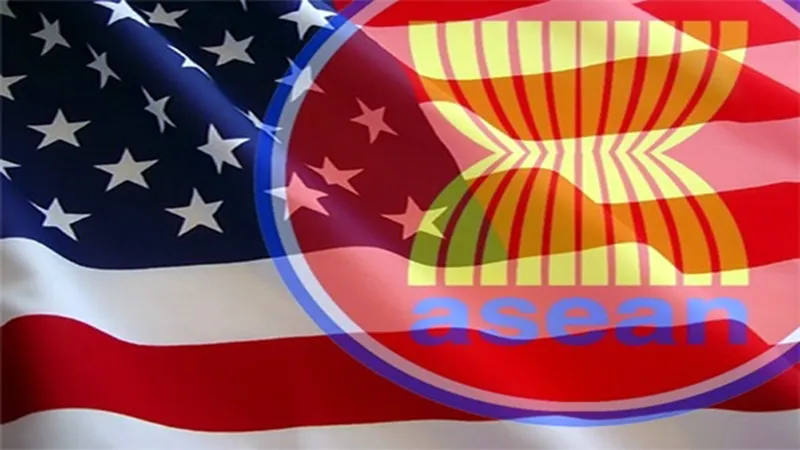-
CENTRES
Progammes & Centres
Location

The expectations from the two-day Summit called the special US-ASEAN Leaders Summit in Sunnylands, California, on February 15 & 16 were high for several reasons. It was the first ever to be held in the US and the first following the establishment of the ASEAN Economic Community. This also comes soon after the Summit in Kuala Lumpur (Malaysia) in November 2015 when the US-ASEAN relationship was elevated to a strategic partnership.
Considering the hype, did the Summit make a significant impact? Such summits have both a symbolic and substantive significance. Many analysts view this Special Summit as a concrete step in the US policy of the “pivot or rebalance to Asia”. This, probably, is a foreign policy legacy that Obama may want to leave. The timing is also significant considering the increasing aggressive behavior of China in the South China Sea. So far, US-ASEAN Summits have been held on the sidelines of the East Asia Summit meetings since 2013. In that year, the US also appointed an Ambassador to ASEAN.
From the outset, it was clear that the agenda would have economic, political, security and people to people dimensions. The significance of the economic and commercial aspects cannot be overstated. ASEAN is the fourth largest trading partner of the US. American companies have huge investments in the region. Obama would have liked more ASEAN countries to join the mega Free Trade Agreement TPP (Trans Pacific Partnership). So far, four of them, Singapore, Malaysia, Brunei and Vietnam have signed up. It will be a long time, if at all, before the whole of ASEAN becomes a part of TPP. As a step to boost economic engagement, Obama announced an initiative dubbed US-ASEAN Connect for building a network of hubs across the region for better coordination.
The South China Sea question
The key issue on everybody’s mind was how the summit would deal with the China question. The apprehension of some ASEAN countries vis-à-vis the aggressive behavior of China in the South China Sea has been increasing over the past few months. Obama himself has been making strong statements on the need for open seas with freedom of navigation and over flights. The continued activities of China in creating new islands and militarizing them have created considerable anxiety. To add to these worries, two days before the Summit, Taiwan and US officials announced that China has deployed surface-to-air missiles on Woody Island of the Paracel Chain which is disputed. China controls the Paracel Chain but Taiwan and Vietnam also claim it. The Chinese government responded by saying that this was not a new development and that defensive military equipment has been on the Island for a long time. The critical question is: are the surface-to-air missiles a new addition?
Dealing with China on this sensitive issue has been difficult for ASEAN. All the ten countries have great economic and commercial interdependence with China which is ASEAN’s biggest trading partner. On the question of the South China Sea, not all ASEAN countries are interested. Only four out of the ten are affected members – Vietnam, Malaysia, Philippines and Brunei. That is why, so far, the ASEAN as a whole has not taken a critical stand against China. To accentuate the divergence, countries like Laos, the current Chair of ASEAN and Cambodia are actually very close to China and are amenable to pressure from the latter. This divergence must have been in Obama’s mind when he said in the news conference that “when ASEAN speaks with a clear and unified voice, it can help advance security, opportunity and human dignity”.
Many analysts, particularly from the US, were expecting the summit joint statement to have an unequivocal reference to China and the South China Sea issue. But the final outcome was quite bland. The relevant paras 7 and 8 fail to mention either “China” or “South China Sea”. While not mentioning China by name is understandable from the Protocol point of view, the absence of South China Sea is surprising. Para 7 talks of “shared commitment to peaceful resolution of disputes including full respect for legal and diplomatic processes without resorting to threat or use of force in accordance with international law and UNCLOS.” Para 8 talks of “ peace, security and stability in the region ensuring maritime security and safety, including rights of freedom of navigation and over flight and other lawful uses of the seas.” Obama would certainly have liked a stronger message. In the news conference, however, he played down the disappointment by saying that “the meeting reaffirmed our strong commitment to a regional order where international rules and norms and the rights of all nations, large and small, are upheld.”
The difficulty that ASEAN as a group faces in the choice between the US and China is quite understandable. While the US has been a reliable partner for many decades, the interdependence with China, particularly in the economic and commercial fields in the past 20 years is irreversible. Ideally, they would not like to be in a position to choose. China’s aggressive behavior in the South China Sea is also a message to the US to test the limits to which it will go to support the claims of the rivals’ lawful uses of the seas. This fits in well with China’s efforts to be a global power for which the first step would be primacy in the Asia Pacific region.
ASEAN’s efforts at balance between the US and China would amount to, as Prof Hugh White of ANU explains aptly, “support for the US against China to avoid Chinese hegemony, but not to preserve US primacy”. The Chinese government’s reaction on the summit has also been interesting. It is supportive of ASEAN but critical of the US. The Foreign Ministry Spokesman Hong Lei said that “the development of relationship between the United States and ASEAN should be conducive to regional stability and development”. He went on to add that “we have taken note of the attempt by some country to use the summit to stir up the South China Sea issue, but most of the ASEAN members did not agree” and reiterated that “the US is not a party concerned with the issue”.
Two questions arise from the summit regarding the future scenario (i) will the absence of a strong stand by the US and ASEAN embolden China to be more aggressive? And (ii) what initiatives can the new US President (Republican or Democrat) take to make the “pivot” credible and effective?
What are the implications for India? The South China Sea is of strategic importance to India. A few days after the summit, the MEA spokesman said that “India has repeatedly stressed for respect for freedom of navigation in international waters, the right of passage and overflight, unimpeded commerce and access to resources in accordance with the 1982 UNCLOS. All states should avoid unilateral action in South China Sea that will lead to tensions in the region.” It is worth noting that Government of India has announced a plan to establish a satellite tracking and data reception and processing station in Vietnam for the benefit of all ASEAN countries.
The views expressed above belong to the author(s). ORF research and analyses now available on Telegram! Click here to access our curated content — blogs, longforms and interviews.

H.H.S. Viswanathan was a Distinguished Fellow at ORF and a member of the Indian Foreign Service for 34 years. He has a long and diverse ...
Read More +